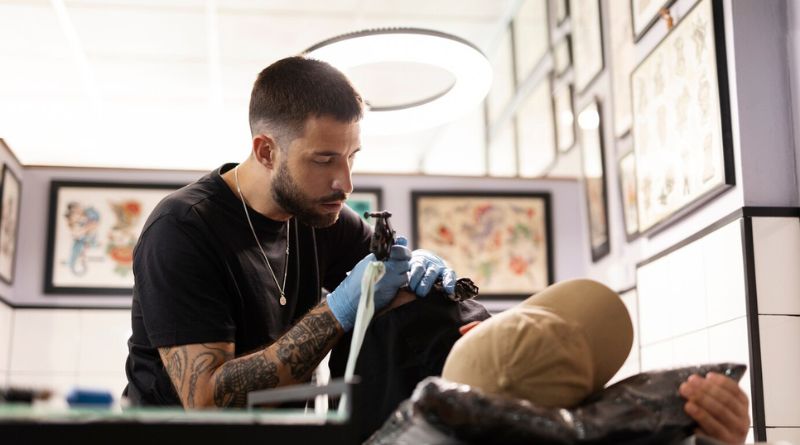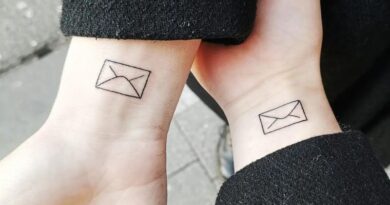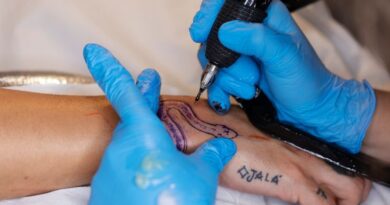Most Painful Places to Get a Tattoo – Are you contemplating getting inked and wondering about the most painful spots for a tattoo? Look no further! In this comprehensive guide, we unveil the 15 Most Painful Places to Get a Tattoo, providing you with valuable insights to help you make an informed decision. Whether you’re a tattoo enthusiast or a first-timer, understanding the pain levels associated with different body parts is crucial. From the notorious ribcage to the sensitive areas like the spine, we delve into the intricacies of pain perception during the tattooing process. Arm yourself with knowledge as we explore the nuances of each location, empowering you to choose the perfect spot for your next masterpiece.
1. Ribs
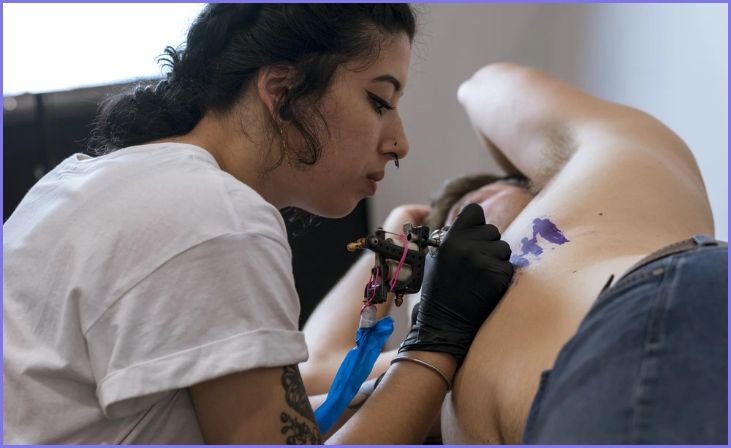
Tattooing the ribcage stands out as one of the most painful experiences due to the proximity of the needle to bone and thin skin. The ribs lack significant muscle or fat layers to cushion the impact, intensifying the sensation. Artists often note that the pain can be sharp and lingering. Breathing during the process may add discomfort, making it crucial for individuals to practice controlled breathing. Despite the challenge, many choose rib tattoos for their aesthetic appeal, showcasing intricate designs along the natural curves. Enduring the pain promises a unique and visually striking piece of body art.
Also Read: How Much Do You Tip a Tattoo Artist
2. Spine
The spine, a central and sensitive part of the body, is another area notorious for its painful tattoo experience. The spinal column houses numerous nerve endings, and the lack of substantial muscle or fat makes the sensation more acute. Tattooing along the spine requires precision, as the spine’s bony structure demands careful navigation by the artist. The pain can radiate across the back and may be more intense towards the base where the spine connects with the tailbone. Despite the discomfort, spine tattoos are popular for their elongated and elegant designs, often chosen for symbolic or personal reasons.
3. Ankles and Shins
Tattooing the ankles and shins can be an excruciating endeavor, primarily because these areas are close to bones and have minimal tissue for cushioning. The skin here is also quite thin, amplifying the pain during the tattooing process. Additionally, the bony prominence of the ankle can make the experience more intense. Artists may advise clients to brace for a stinging sensation, and swelling can be expected post-tattoo. However, the appeal of ankle and shin tattoos, especially for showcasing smaller, intricate designs or discreet symbols, continues to attract those willing to endure the temporary pain for a lasting artistic expression.
4. Elbows
Getting a tattoo on the elbows presents its own set of challenges in terms of pain. The skin around the elbows is thinner, and the proximity to bone can result in heightened sensitivity. The joint’s constant movement can make the process uncomfortable, requiring the artist to work with precision and the client to endure short bursts of intensified pain. Despite the challenges, elbow tattoos can be visually captivating, with designs wrapping around the joint or complementing the natural contours. Managing expectations and choosing an experienced artist become crucial for a successful and aesthetically pleasing outcome in this potentially painful area.
5. Knees
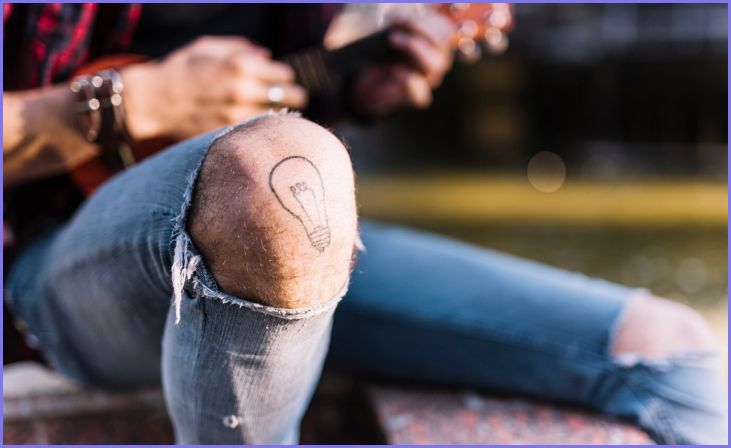
Tattooing the knees is known for its discomfort due to the bony structure and thin skin covering the joint. The sensation is often described as sharp and intense, and clients might experience a pulsating pain as the needle works over the knee cap and surrounding areas. Artists need to adapt their technique to accommodate the joint’s movement during the session. The challenge lies not only in enduring the pain but also in achieving a well-executed design that complements the unique shape of the knees. Despite the potential pain, knee tattoos offer a canvas for creative and personalized body art.
6. Hands and Fingers
Tattooing the hands and fingers can be both visually appealing and notably painful. The skin on the hands is thin, and the lack of substantial muscle or fat makes the bones more prominent. Additionally, the constant use of hands in everyday activities can make the healing process challenging. The fingers, being densely packed with nerve endings, intensify the pain during the tattooing procedure. Despite the discomfort, hand and finger tattoos have gained popularity for their delicate and intricate nature. Clients often opt for small symbols or meaningful designs, acknowledging that enduring the pain can result in a striking and personal statement piece.
7. Armpits
The armpit, with its sensitive skin and proximity to lymph nodes, ranks high on the list of painful tattoo locations. The thin skin here makes the experience more intense, and the potential for irritation during the healing process is elevated. Artists must navigate carefully to avoid lymph nodes while ensuring a precise and well-executed design. Clients seeking armpit tattoos often do so for the unique placement and the opportunity to create a hidden, personal piece of art. Managing expectations about the discomfort and healing challenges is crucial for those venturing into this less conventional but distinctive tattoo location.
Also Read: What Does the Teardrop Tattoo Mean
8. Groin Area
Tattooing the groin area involves dealing with a high level of sensitivity and potential discomfort. The skin in this region is thin, and the proximity to nerve endings amplifies the pain during the tattooing process. Artists and clients alike need to approach this area with careful consideration, emphasizing communication and collaboration. While groin tattoos may be chosen for their private and intimate nature, it’s essential to acknowledge the pain factor and ensure a skilled artist is engaged for the procedure. The result can be a uniquely personal and meaningful tattoo, but individuals must be prepared for the challenges associated with this delicate area.
9. Neck and Throat
The neck and throat are sensitive areas where the skin is thin, making tattoos in this region notably painful. The proximity to the spine and various nerves increases the intensity of the sensation during the tattooing process. Artists must exercise precision to avoid causing discomfort or potential damage to delicate structures. Despite the pain, neck and throat tattoos are chosen for their visibility and the opportunity to showcase intricate designs. Clients often opt for symbols or phrases that hold personal significance. Understanding and preparing for the heightened pain levels in these areas are crucial for those seeking to adorn their neck and throat with meaningful body art.
10. Face

Getting a tattoo on the face is a bold choice that comes with its own set of challenges, primarily due to the delicate and highly visible nature of the area. The thin and sensitive skin, along with the potential impact on facial expressions, makes facial tattoos one of the more painful options. Artists need to balance precision with the client’s comfort, considering both the physical and emotional aspects of the experience. Despite the pain, facial tattoos continue to be sought after for their uniqueness and the opportunity to make a bold statement. Individuals venturing into face tattoos must carefully select a skilled and experienced artist to ensure a successful and aesthetically pleasing outcome.
11. Sternum
Tattooing the sternum, the central bone connecting the ribs, is renowned for its discomfort. The sternum lacks significant muscle or fat, exposing the underlying bone, which can result in a more intense and acute pain. The thin skin adds to the sensitivity, making the tattooing process challenging. Artists often caution clients about potential discomfort and may suggest smaller, well-planned designs to minimize the overall pain and ensure a successful outcome. Despite the challenges, sternum tattoos offer a unique canvas for intricate designs that can accentuate the natural curves of the chest, making the temporary discomfort worthwhile for those seeking a visually striking piece.
12. Face and Head
While facial tattoos were mentioned earlier, extending to the head, including the scalp, presents additional challenges. The scalp contains numerous nerve endings and blood vessels, contributing to heightened sensitivity during tattooing. The pain can vary across different parts of the head, with some areas being more sensitive than others. Artists need to consider the hairline and the potential impact on hair growth when planning and executing head tattoos. Clients opting for head tattoos often embrace the boldness and uniqueness of the placement, understanding that the pain is part of the trade-off for an eye-catching and distinctive piece of body art.
13. Inner Thigh
The inner thigh is another location known for its discomfort during tattoo sessions. The skin here is relatively thin, and the proximity to the groin and sensitive areas adds to the pain. Clients considering inner thigh tattoos should be prepared for a stinging sensation, and artists may recommend breaks to manage the discomfort. Despite the potential pain, inner thigh tattoos offer a private yet visually appealing option for those seeking an intimate and personalized piece of body art. Choosing the right artist, communicating openly about pain tolerance, and planning for the healing process are essential steps for a successful inner thigh tattoo experience.
Also Read: Things You Should Know About Tattoo
14. Nipples
Tattooing the nipples is an intricate and potentially painful process due to the high sensitivity of this area. The thin skin, coupled with the abundance of nerve endings, makes the experience more intense. Artists must approach nipple tattoos with nipple precision and delicacy to ensure a successful outcome. Clients seeking nipple tattoos often do so for aesthetic or reconstructive reasons, embracing the opportunity to create a unique and personalized design. Pain management strategies, clear communication between the artist and client, and a focus on proper aftercare are crucial elements in achieving a well-executed and visually appealing nipple tattoo.
15. Behind the Ear
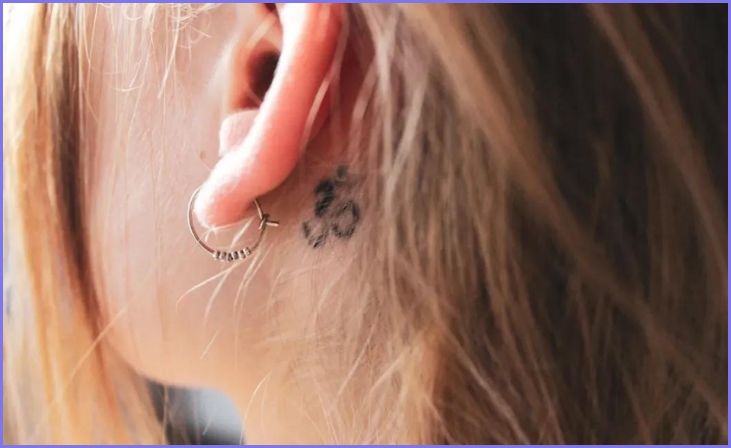
The area behind the ear, though small, can be surprisingly painful for tattooing. The skin is thin, and the proximity to the skull and cartilage makes the sensation more acute. Artists must exercise caution to avoid discomfort and ensure a precise design. Behind-the-ear tattoos are often chosen for their subtlety and the opportunity to showcase small, intricate designs. Despite the potential pain, individuals opting for behind-the-ear tattoos appreciate the unique placement and the chance to adorn this discreet area with meaningful body art. Clear communication, pain management discussions, and careful planning are essential for a successful and visually appealing behind-the-ear tattoo experience.
Conclusion
In the realm of tattoos, pain is an inevitable part of the process, but armed with the right information, you can navigate your ink journey more confidently. The 15 Most Painful Places to Get a Tattoo guide has equipped you with insights into the nuances of pain perception across various body parts. Remember that the pain will go away, but your tattoo will last a lifetime. So, choose wisely, communicate effectively with your tattoo artist, and embrace the beautiful art that will adorn your chosen canvas. Happy inking!
FAQs
Yes, pain levels can vary based on body location. Generally, areas with thin skin, fewer nerve endings, and proximity to bones are more painful. The ribcage, spine, and ankles are often considered among the most painful.
Communicate openly with your tattoo artist about pain tolerance, take breaks if needed, and consider numbing creams or local anesthetics for particularly sensitive areas.

